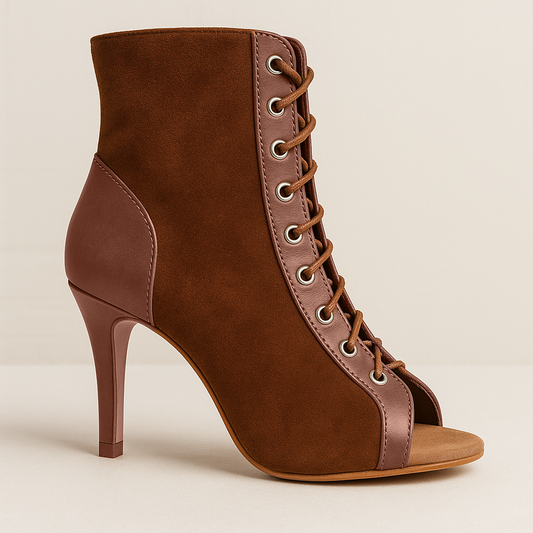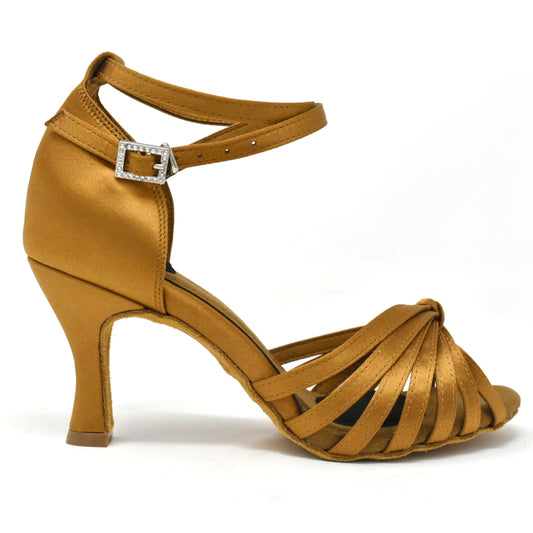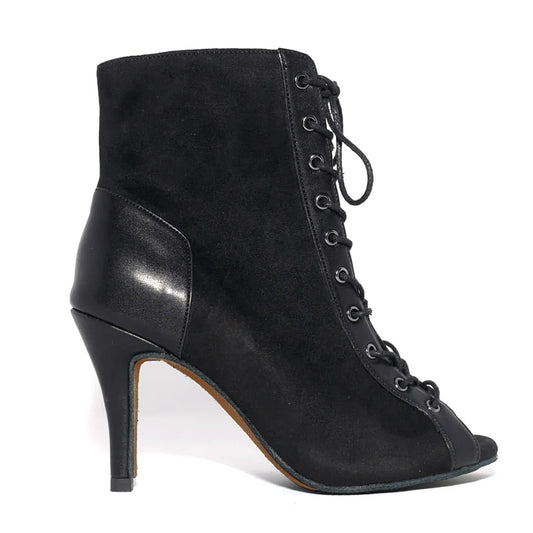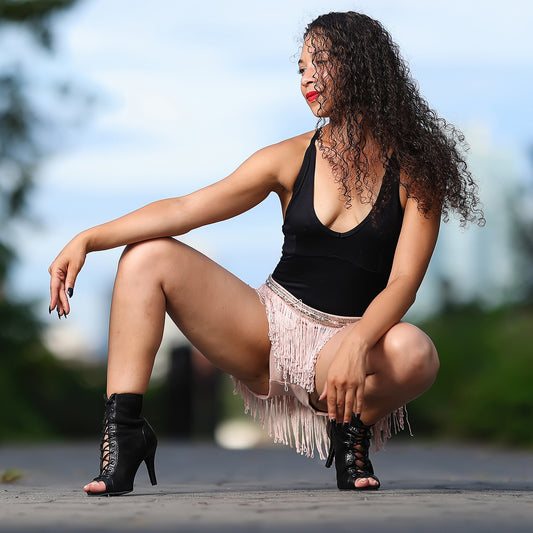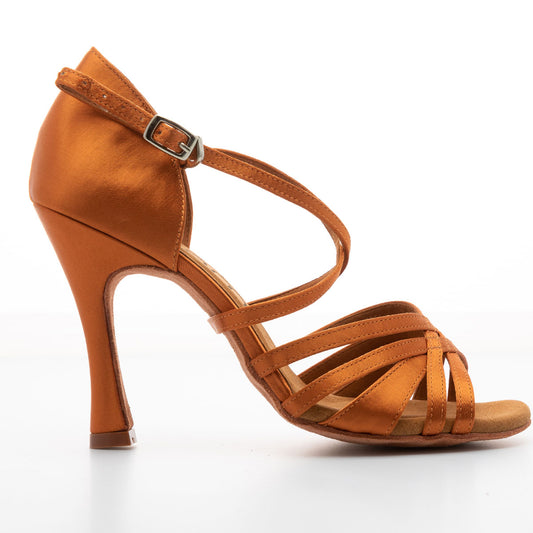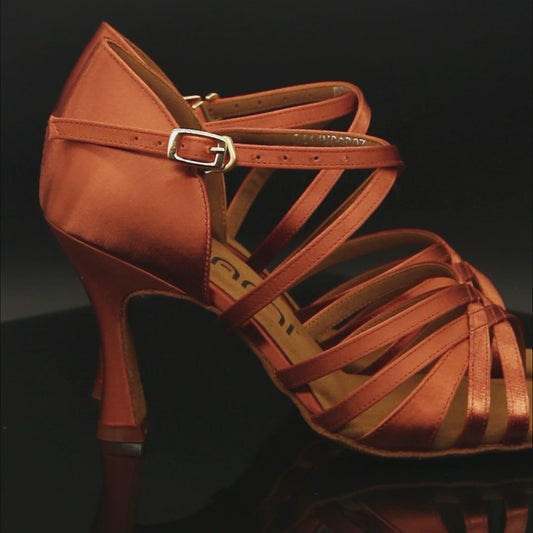
Latin dance shoes, these are the kind of investment that pays for themselves. Whether you’re wearing dancing shoes for rehearsals, practice, social dancing, or the performance of a lifetime, these must-haves let you shine on and off the dance floor. And if you’re wearing a pair of Yami shoes, you can give the performance of the lifetime in comfort!
But because dance shoes take a lot of beating, caring for them is key to extending their life. Endless hours of practice, dirty floors, and all that fancy footwork will take its toll on your dance shoes. That’s why it’s important to know how to care for your shoes properly. You simply cannot throw your dance shoes in the wash, you have to clean it depending on the material:
Material
Leather
Smooth Leather: Hardy and durable but sweat could dry out the material. Exposure to moisture for an extended period increases the risk of mold growth. Needs regular brushing to eliminate dust buildup and make scratches less visible. Generally, genuine leather has to be conditioned.

Textured Leather: Stain resistant and durable but prone to drying out when kept in storage for too long. Exposure to moisture for an extended period increases the risk of mold growth. Generally, genuine leather has to be conditioned.
Suede Leather: Durable and dust resistant. Suede is quite soft and delicate so it needs regular brushing to remove accumulated dust and make scuffs less visible. The delicate material is sensitive to harsh cleaning agents. Generally, genuine leather has to be conditioned.
Vegan Leather
Depending on the quality, vegan leather is less durable than genuine leather so the material is prone to scuffs, and tears. Resistant to dust and stains but prone to flaking when stored for a long time. Here at Yami Shoes, we only use vegan leather and Flock - an alternative to suede leather - for our Latin dance shoes because:
Flexibility: Leather is known for its rigidity, a quality that makes it tough and durable. But the rigid material takes some time to break in. It will take several uses before the material softens, which means dancing with leather shoes isn’t as comfortable as dancing in Yami dance shoes. The lack of flexibility as well as the pain you experience dancing with leather shoes will affect your overall performance.
Comfortability: Leather dance shoes need breaking in because the rigid material is thicker than vegan leather and they hurt the feet. The fit of dance shoes is different from regular shoes, it should be snug. That’s the reason why dancers buy dancing shoes that are a half to a full size smaller.
Now imagine dancing in a pair of snug leather shoes, it’s not only uncomfortable, but the hardy material also leaves the feet with blisters and cuts. Vegan leather is the most comfortable alternative. The material molds to your feet for a snug fit sans the pain and blisters.

Cruelty-Free: Here at Yami Shoes, we believe that everyone deserves the best quality Latin dancing shoes without hurting the animals. The material is 100% cruelty-free, no animals were hurt in making these beautiful Latin dancing shoes. On top of that, the materials we use are environmentally-friendly. By buying your Latin dance shoes from us, you’re not contributing to the world’s worsening pollution. You are a part of the solution!
Flock (Faux Suede)
Flock is a type of faux leather made with textured synthetic fibers. Here at Yami Shoes, we use flock in place of suede leather because the material is cruelty-free and softer. Flock also comes in many colors, allowing shoe designers to come up with standout designs.
Flock is quite hardy so you don’t need to baby the material at all. It's scratch-resistant, doesn't tear easily, and it retains its texture for a long time. All it needs is regular brushing to remove accumulated dust.
Satin
Breathable and light - feels like nothing on. The luxurious satin material adds a subtle shimmer to your feet but it tends to pick up dirt and grime easily. Very prone to smudges and oily stains, grimy stains that are a pain to remove. The wrong cleaning product could either spread the stain or cause discoloration.

Textile
Lightweight and easy to maintain but prone to stains. Fabric materials like denim are quite durable so these materials are perfect for everyday dancing shoes. But the material tends to pick up grime and dust quickly so it needs regular cleaning.
Soles
Suede Soles
Most dance shoes have suede soles, a very delicate material that needs constant care. When used regularly, the sole of the dancing shoes tends to accumulate deep-seated grime and dirt that are hard to remove. The soles are also subject to constant abuse so they’re prone to cracking and/or tearing when left neglected.
Microfiber Soles
Dancing shoes like Yami Latin shoes are made with microfiber. Microfiber is a synthetic material that’s similar to suede but is 1) cruelty-free 2) hypoallergenic and 3) wicks moisture away from the skin. If you’re a conscientious buyer who only supports cruelty-free products, we’re happy to report that Yami shoes are 100% animal and environmentally-friendly. The microfiber soles are also perfect for anyone who’s allergic to the chemicals used for leather tanning.

Since microfiber doesn’t absorb sweat like regular suede, it won’t smell after a few uses. This makes microfiber easier to maintain. The breathable material means that microfiber soles provide more comfortable wear.
Caring for Your Dancing Shoes by Material
Caring for Leather
Leather shoes with smooth or patent leather should be cleaned regularly with a soft brush. Brush your leather shoes at least once a week to remove accumulated dirt and make scratches less visible. The shoe polish should match the leather’s color.
For textured leather, the material itself is resistant to scuffing, tearing, and staining but should also be brushed at least once a week. Use a leather cleaner to remove stains and condition the material at the same time.
For stains and grime, spot clean with a damp cloth. For grimy stains, blot with a clean cloth that’s slightly dampened with a gentle cleaning agent. This should lift the oily residue, making stains less noticeable. Finish up with a thin layer of leather conditioner to moisturize the leather and minimize the risk of flaking.

For suede and/or nubuck dancing shoes, the material will require regular brushing to keep the material looking new. For surface stains, gently wipe with damp paper towels. Dry the shoes completely then finish up with a good brushing.
A soft cloth dampened with lukewarm water should remove deep-seated, dried-up stains. For oil-based stains, try blotting with a soft cloth dampened with ethyl alcohol. Follow up by wiping with a clean cloth dampened with water, dry the shoes completely then brush away.
Caring for Vegan Leather
Treat vegan leather the same way as genuine leather. Polish the material at least once a day and then condition with a regular leather conditioner to keep the shoes looking new. Because vegan leather is thinner than genuine leather, it has to be conditioned regularly to prevent flaking.
To remove surface stains, wipe gently with a damp cloth or paper towel. Dry the shoes completely then finish up with a good brushing. For oil-based stains, try blotting with a soft cloth dampened with ethyl alcohol. Follow up by wiping with a clean cloth dampened with water, dry the shoes completely then brush away.
Caring for Flock (Faux Suede)
Brush the material regularly with a suede brush to remove dust and surface dirt. When it comes to stains, do not use harsh detergents. We recommend spot cleaning the stain by saturating a soft, clean cloth with water and a mild liquid detergent. You can also use a suede stain eraser for tough stains that water and detergent cannot remove.

Caring for Satin
Of all materials used for dance shoes, satin is the most delicate. The material is lightweight because it’s thin, which makes it prone to tearing. The material has the uncanny ability to pick up the slightest stains and removal can be hard with just a damp cloth.
To clean your satin dance shoes, prep the material by dry brushing away all the dust and dirt with a soft shoe brush. Never use damp cleaning materials because the surface dirt could end up going deeper into the material, which will make it hard to remove.
For stubborn stains, add a small amount of gentle hand washing liquid on a soft damp cloth and then gently rub onto the material. Pat with a clean cloth dampened with cold water to remove the lather, blot with a dry towel to remove as much moisture as possible then residue then air dry. Remember, leaving the satin shoes damp after cleaning might cause watermarks so you have to remove as much of the moisture as possible while air drying.
Caring for Textiles
Thick fabrics can pick up dirt and dust much faster than leather so clean your dancing shoes the same way you’d clean a pair of satin dance shoes. Start by brushing away the dirt and dust with a dry soft brush. Then, spot clean with a dampened cloth, blot dry then air dry.
For stubborn dirt, use soapy water to spot clean the stain, take as much of the moisture out as possible to prevent watermarks then air dry.

Caring for Your Dancing Shoe Soles
Caring for Suede Sole
Dancing soles are different from conventional walking shoes because the soles are made with suede material. The material optimizes the freedom of movement, allowing you to execute those complex twirls and turns! But, suede is one of the most delicate of all leather materials so it should be taken care of regularly to extend its life.
Brush the material with a suede brush to remove surface dirt and dust. For mild stains, you can either spot clean with a clean cloth dampened with a mild detergent or use a suede stain eraser. Do not over-saturate suede with water because this might lead to discoloration or damage. Also, do not use a hairdryer to speed up the drying process. Just air dry the material.
Caring for Microfiber Sole
Microfiber is a breathable, low-maintenance material. You can use a suede brush to remove superficial dirt and dust build-up. For mild stain, use a damp, clean cloth to spot clean. Follow up with a good brush of suede brush then leave to air dry. Avoid over saturating the material with water or cleansing agents because this can cause damage and/or discoloration to the microfiber sole.
References
https://www.ballroomdanceplanet.com/how-to-clean-ballroom-dance-shoes/
https://thedancestore.ca/best-way-to-clean-dance-shoes/
https://ilovedanceshoes.com/blogs/guides/how-to-take-care-of-your-dance-shoes
https://blog.rayrose.com/how-to-clean-the-soles-of-dance-shoes/
https://www.freedoflondon.com/how-to-care-for-your-latin-and-ballroom-dance-shoes/
https://www.cleanipedia.com/gb/laundry/how-to-clean-satin-shoes-sheets-clothes.html
https://www.ehow.com/how_5808610_clean-faux_suede-shoes.html
https://bootmoodfoot.com/clean-faux-suede-shoes/


